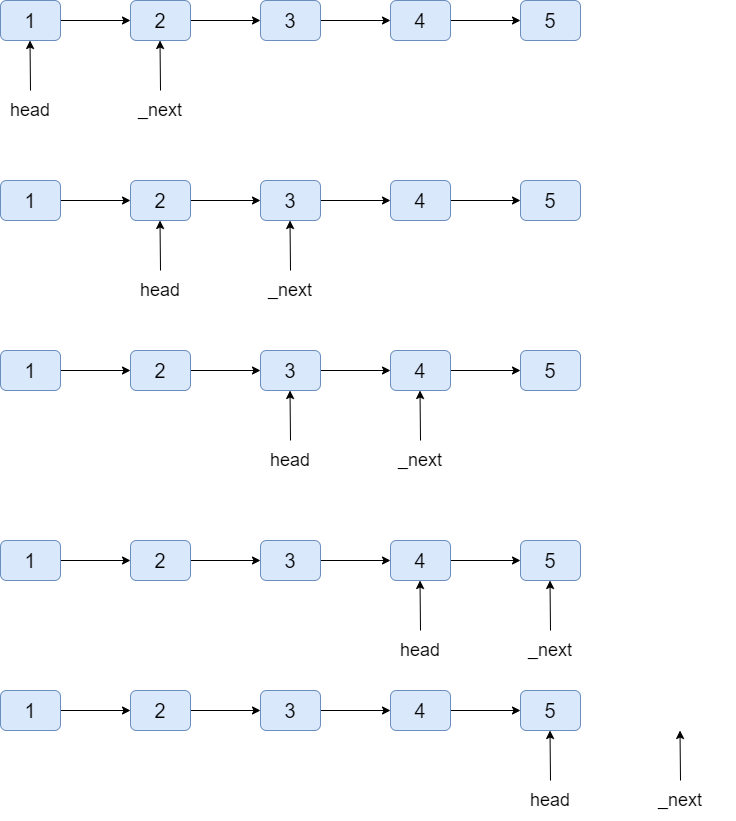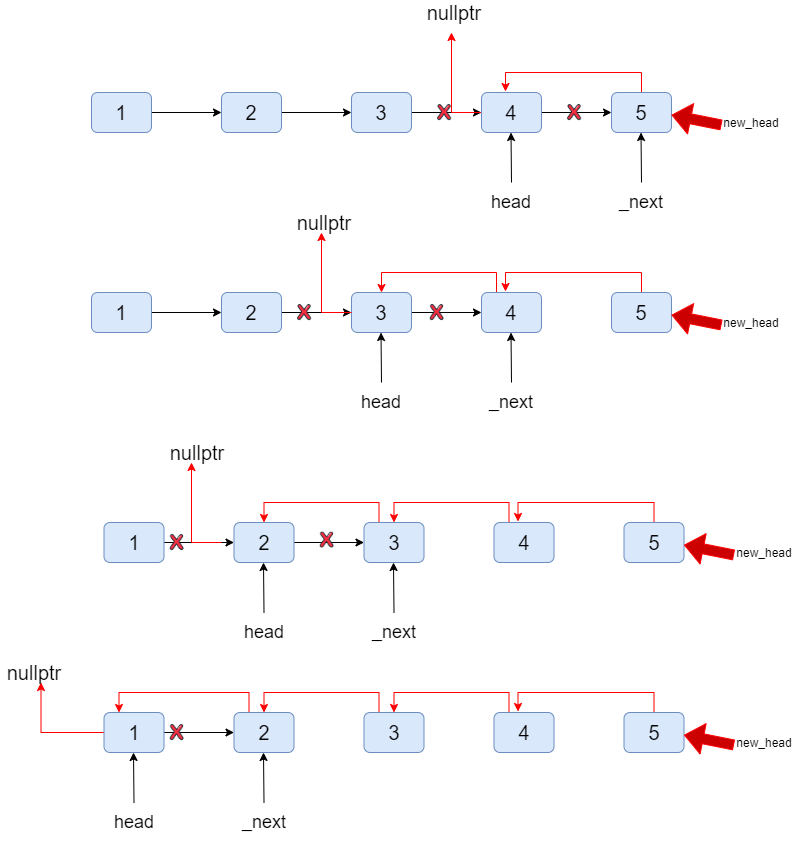反转链表是一道很经典的链表操作的题目,也很简单,至于我为什么要写一篇blog来记录这题呢?
我记得当初我一战考研复习数据结构的时候,看到书上用递归写的反转链表我一直都不太明白,如今我再刷一遍这题,我相信递归的方法我已经彻底懂了。
剑指 Offer 24. 反转链表
定义一个函数,输入一个链表的头节点,反转该链表并输出反转后链表的头节点。
示例:
2
3
> 输出: 5->4->3->2->1->NULL
>
限制:
2
>
迭代
1 | ListNode* reverseList(ListNode* head) { |
递归
递归才是我们这次的主题哦.
我们先给出部分代码:
1 | ListNode* reverseList(ListNode* head) { |
由上面代码可看到我们直到递归终止条件的时候,其实和普通的遍历没有很大的区别,遍历的方式如下图。
只不过当_next为nullptr时候触发递归终止条件,使得入栈的函数出栈.

触发递归终止条件
1 | /* |

1 | ListNode* reverseList(ListNode* head) { |